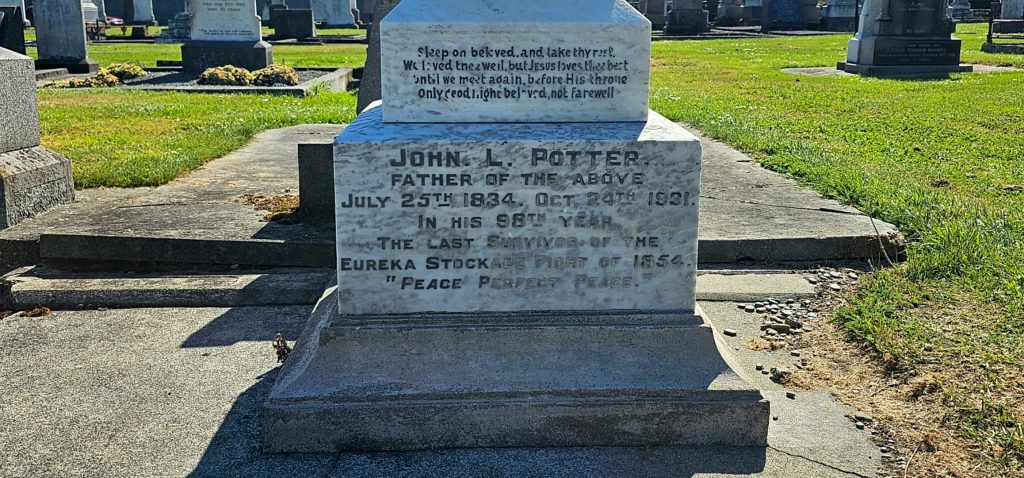An Otago-based military historian is on the hunt for the descendants of a man long buried in Timaru, in an effort to tell his story.
While visiting Timaru, military historian Peter Trevathan decided to take a trip to the local cemetery to see what he could find.
A four-time national award winner for his work, Mr Trevathan had his interest piqued when he came across the gravestone of John Lishman Potter.
Mr Potter was buried in the Timaru cemetery after his death on October 24, 1921 at the age of 98.
Mr Trevathan said what caught his eye about Mr Potter, in particular, was the fact that he was the last known survivor of the Eureka Stockade rebellion.
‘‘The Eureka Stockade fight happened in 1854 in Ballarat, Victoria, when the miners told the British government to take a walk as the price of mining was going up.
‘‘The miners basically said we don’t want to do this any more, so built a blockade and fought against the 40th regiment in Ballarat.
‘‘The captain of the 40th was killed along with eight of his soldiers, and about 20 miners were killed and over 100 injured.’’
‘‘It was quite a major battle.’’
Mr Potter was born in Sunderland, England in 1834. With news of the gold rush in Victoria spreading, he boarded a ship and set sail in search of his fortune.

In a Melbourne Herald article from February 9, 1924, at the age of 77, Mr Potter recounted his experiences in the rebellion.
He highlighted the actions of Peter Lalor, the hero of the uprising, and the miners burning their licences in contempt of the official decrees.
He also recalled turning over carts on the main road to Melbourne, and erecting barricades in preparation for the battle that was to come.
Mr Potter found his way to New Zealand after the fight, taking part in the Gabriel’s Gully gold rush in Otago. He eventually retired to Timaru as a builder.
Mr Trevathan said his plan was to erect a sign detailing the story of Mr Potter and the Eureka Stockade, similar to what he had done many times for graves in Otago.
‘‘The first thing I need to do is get a hold of the descendants, and find out what information they have. From there we can sit down and talk and ask them if it is OK that we can put a sign here, so that people can read about [Mr Potter] and the Eureka Stockade.
‘‘The second thing is, we need to get permission from the council to put the sign there and thirdly is to get funds for it, which I don’t think there will be an issue with considering the uniqueness of the grave.

‘‘All around Otago I’ve got lots of signs up for VC [Victoria Cross] winners and for quite unique people as well.’’
He said it was important that the stories of individuals such as Mr Potter were told.
‘‘Every day people walk around cemeteries and you just walk past graves, and you don’t know the story of the person. My job is to bring stories alive and tell the unique history of these people.
‘‘People should know about the people buried here and the history behind them.’’
Anyone with information on descendants of John Lishman Potter could email Mr Trevathan at [email protected]





